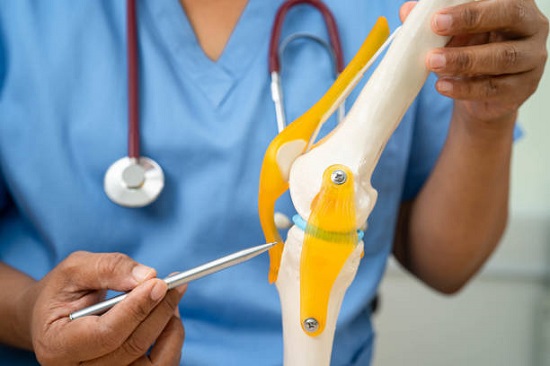
What is Osteotomy Knee Surgery?
Osteotomy knee surgery is a procedure performed to realign the bones in the knee joint.
This surgery is often
recommended for individuals with early-stage arthritis, knee deformities, or damage
confined to one side of the knee.
Instead of replacing the joint with an artificial implant, as in knee replacement,
osteotomy aims to preserve the
natural joint by redistributing weight across healthier areas of the knee.
In an osteotomy, the surgeon either adds or removes a wedge of bone near the damaged
joint to correct alignment.
This procedure reduces stress on the affected part of the knee, delaying or even
avoiding the need for total knee replacement.
Advantages of Osteotomy Knee Surgery
Osteotomy offers several benefits compared to other knee surgeries, especially for
younger, more active patients:
- Preservation of the Natural Joint: Unlike knee replacement,
osteotomy allows patients to retain their natural joint structure and movement.
- Delay in Knee Replacement: For younger patients, osteotomy can
delay the need for a total knee replacement, often for 10-15 years.
- Improved Weight Distribution: By realigning the knee, the procedure
redistributes weight from the damaged part of the joint to healthier areas.
- Increased Mobility: Many patients report improved knee function and
reduced pain following surgery.
- Participation in Physical Activities: Patients often regain the
ability to engage in activities like walking, hiking, or even light sports.
When Should You Consider Osteotomy Knee Surgery?
Osteotomy knee surgery is often recommended for patients who:
- Have arthritis or cartilage damage on one side of the knee.
- Experience significant pain and stiffness, especially during weight-bearing
activities.
- Have knock-knee (valgus deformity) or bow-leg (varus deformity) alignment issues.
- Are younger and wish to delay or avoid total knee replacement surgery.
- Do not respond to conservative treatments such as physical therapy, medications, or
injections.
Types of Osteotomy Knee Surgery
- High Tibial Osteotomy (HTO): Commonly performed to correct bow-leg
(varus) deformity. A wedge of bone is removed or added to the tibia (shinbone) to
realign the joint.
- Distal Femoral Osteotomy (DFO): Performed to correct knock-knee
(valgus) deformity. A wedge of bone is removed or added to the femur (thighbone) to
restore proper alignment.
Recovery and Rehabilitation
Recovery from osteotomy knee surgery typically involves several stages:
- Hospital Stay: Patients generally stay in the hospital for 1-2
days. Physical therapy begins shortly after surgery to encourage mobility.
- Assistive Devices: Crutches or a walker may be needed for 6-8 weeks
to reduce stress on the healing knee.
- Physical Therapy: A customized physical therapy plan helps rebuild
strength, improve range of motion, and restore stability.
- Weight-Bearing Activities: Gradual weight-bearing is introduced
under medical supervision to ensure proper healing.
- Full Recovery Timeline: Most patients achieve significant
improvements in 3-6 months, but full recovery may take up to a year.
Risks and Considerations
While osteotomy knee surgery has many benefits, it is not without risks. Potential
complications include:
- Infection: As with any surgery, there is a small risk of infection.
- Blood Clots: Post-surgical blood clots in the leg can occur but are
preventable with proper care.
- Incomplete Pain Relief: Some patients may still experience mild to
moderate knee pain after surgery.
- Progression of Arthritis: Over time, arthritis may progress in the
knee, potentially requiring future knee replacement.
- Nonunion: In rare cases, the cut bone may fail to heal properly.
Lifestyle Adjustments Post-Surgery
To maximize the benefits of osteotomy knee surgery and maintain knee health, patients
should adopt the following lifestyle habits:
- Maintain a Healthy Weight: Excess weight can put additional stress
on the knee, hindering recovery and increasing the risk of further joint damage.
- Engage in Low-Impact Activities: Activities like swimming, cycling,
and yoga strengthen the knee without overloading the joint.
- Wear Supportive Footwear: Proper shoes with arch support and
cushioning help distribute weight evenly and reduce knee strain.
- Avoid High-Impact Sports: Activities like running or jumping can
stress the knee, leading to faster wear and tear.
- Follow Your Physical Therapy Plan: A consistent rehab program is
essential for a full recovery and to restore optimal function.
Preventing the Need for Osteotomy
While not all causes of knee damage can be prevented, you can reduce your risk with these
steps:
- Strengthen Knee Muscles: Regular exercises focusing on the
quadriceps, hamstrings, and calves help stabilize the knee joint.
- Practice Proper Techniques: When lifting heavy objects or
exercising, use proper form to avoid overloading the knee.
- Avoid Overuse: Take breaks during repetitive activities to reduce
knee stress.
- Stay Active: Engaging in moderate physical activity prevents joint
stiffness and maintains overall joint health.
Osteotomy knee surgery is an effective option for younger, active individuals seeking
pain relief and improved mobility
without undergoing total knee replacement. By realigning the knee joint, this procedure
redistributes weight, reduces
stress on damaged areas, and preserves the natural joint. If you’re struggling with knee
pain and considering surgery,
consult a specialist to determine whether osteotomy is the best solution for your needs.

Share This News